ISO 22301 Lead Implementer Overview
ISO 22301 Lead Implementation Course Outline
Module 1: Introduction to Business Continuity Management Systems
- What is a BCMS?
- Management Systems
- What is Business Continuity Management System?
- BCM System Process
- Business Continuity Management (BCM)
- BCMS Benefits
- Business Continuity Management Lifecycle
- Applicability and Objectives
Module 2: Scope of a BCMS
- Overview
Module 3: Fundamental Principles and Concepts of Business Continuity
- Fundamental Principles
- Build a Comprehensive Plan
- Implement Each Step of the Action Plan
- Check and Evaluate Results
- Review and Make Improvements
- Business Continuity
Module 4: Clauses 4 to 8 of ISO 22301
- Introduction
- Clauses of ISO 22301
- Clause 4 – Context of the Organisation
- Clause 5 – Leadership
- Clause 6 – Planning
- Clause 7 – Support
- Clause 8 – Operations
Module 5: Overview of ISO 22301 Standard
- Introduction to ISO 22301
- 22301 Standard
- 22301 Standard Progression
- 22301 High-level Methodology
- Implementation Cycle Times
Module 6: BCM Mandatory Documents
- Clause 4.2.2
- Clause 4.3
- Clause 5.3
- Clause 6.2
- Clause 7.2
- Clause 7.4
- Clause 8.2.1
- Clause 8.2.2
- Clause 8.2.3
- Clause 8.4.1
- Clause 8.4.2
- Clause 8.4.3
- Clause 8.4.4
- Clause 8.4.5
- Clause 9.1.1
- Clause 9.3
- Clause 10.1
Module 7: Leadership
- Leadership and Commitment
- Establishing the Business Continuity Policy
- Communicating the Business Continuity Policy
Module 8: Management Roles and Responsibilities
- Overview
- Impediments to Success
- Aids to Success
Module 9: Implementation Phases of the ISO 22301 Framework
- Management Support
- Identification of Requirements
- Business Continuity Policy and Objectives
- Support Documents for Management System
- Risk Assessment and Treatment
- Business Impact Analysis
- Business Continuity Strategy
- Business Continuity Plan
- Training and Awareness
- Documentation Maintenance
- Exercising and Testing
- Post-Incident Reviews
- Communication with Interested Parties
- Measurement and Evaluation
- Internal Audit
- Corrective Actions
- Management Review
Module 10: Continual Improvement of a BCMS
- Continual Improvement
- BCMS Control System
- Areas of Continual Improvement
Module 11: Audit
- Introduction to Audit
Module 12: Auditing Principles
- Fundamental Principles
- Internal Auditing
- Scope
- PDCA Cycle
Module 13: Auditing Roles
- What are the Roles?
- Organisational Context
- Management Responsibilities
- Planning, Support, and Operation
- Performance Evaluation
- Improvement
Module 14: Roles and Responsibilities of the Auditor
- Internal Auditing
- Roles and Responsibilities
- Typical Internal Audit
Module 15: Skills of an Internal Auditor
- Internal Auditing Goals
- Qualities of an Auditor
- Auditing Skills
Module 16: Purpose of Internal Auditing
- 22301 Mission
- Key Benefits of BCMS
Module 17: Audit Procedures
- BCMS Audit Process
- Elements of an Internal Audit
- Internal Audit Process
- Required Documentation
- Supporting Procedural Documentation
- Required Records and Documentation
Module 18: Audit Triangle
- Fraud Triangle
- Tackling the Fraud Triangle
Module 19: Auditing Techniques
- Classifying Audit Findings
- On-Site Auditing
- Remote Auditing Methods
Module 20: Work Document Approach
- Steps to Certification
- Certification Audits
Module 21: Business Continuity Control Best Practice
- Overview
- BCM Policy
- Management Commitment
- Plan How to Deal with an Emergency
- Impediments to Success
- Disaster Recovery
Module 22: Planning a Business Continuity Management System (BCMS)
- Planning a BCMS
- Steps to Plan a BCMS
Module 23: Implementation of Business Continuity and Writing Procedures
- Communication
- Writing a Scenario
- Delivering the Scenario
- Implementing a BCMS
Module 24: Business Impact Analysis (BIA) and Risk Assessment
- Business Impact Analysis
- Risk Assessment
- Risk Assessment Methodologies and Implementation
- Risk Treatment Implementation
Module 25: Incident Management and Emergency Management
- Overview
- Incident Management
- Emergency Management
- Key Elements of Crisis Management Respond Process
Module 26: Operations Management of a BCMS
- Introduction to Operations Management of a BCMS
Module 27: Business Continuity Strategies and Solutions
- General
- Identification of Strategies and Solutions
- Selection of Strategies and Solutions
- Resource Requirements
- Implementation of Solutions
Module 28: Business Continuity Plans and Procedures
- General
- Response Structure
- Warning and Communication
- Business Continuity Plans
- Recovery
- Evaluation of Business Continuity Documentation and Capabilities
Module 29: Performance Evaluation, Monitoring, and Measurement of a BCMS
- Performance Evaluation, Monitoring, and Measurement of a BCMS
- Key Performance Indicators (KPI)
- Identifying Indicators of an Organisation
- Critical Success Factors (CSFs)
- Writing an Effective Critical Success Factor
- CSFs for Strategic Planning
- Performance Evaluation
- Case Study: Telefonica
- Cutting Complexity
- Taking Actions
Module 30: Development of Metrics, Performance Indicators, and Dashboards
- Development of Metrics
- KPI Dashboards
- Steps to Create KPI Dashboards
Module 31: Internal Audit and Management Review of a BCMS
- Internal Audit
- Introduction to Management Review
- Purpose of Management Review
- Management Review Input
- Management Review Outputs
Module 32: Improvement and Implementation of a Continual Improvement Program
- Nonconformity and Corrective Action
- Continual Improvement
- Lifelong Learning
- Tone from the Top
- Let’s have a Plan
- Second Opinion
- Catching up
- Takeaway
Module 33: Preparing for a BCMS Certification Audit
- BCMS Certification Audit
- Choose a Certification Body
- Certification Audits
- Surveillance Visits
Module 34: Development of a BCMS and Business Continuity Policies
- Development of a BCMS
- Steps for Development of a BCMS
- Business Continuity Policies


Who should attend this ISO 22301 Lead Implementer Course?
The ISO 22301 Lead Implementer Training Course equips professionals with the knowledge and skills required to implement and manage a BCMS in accordance with the ISO 22301 standard. This ISO 22301 Certification Course can be beneficial for a wide range of professionals, including:
- Business Continuity Managers
- Risk Management Professionals
- Information Security Experts
- Operational Continuity Planners
- Compliance Officers
- Quality Management Professionals
- Senior Managers
Prerequisites of the ISO 22301 Lead Implementer Course
There are no formal prerequisites for attending this ISO 22301 Lead Implementer Course.
ISO 22301 Lead Implementer Course Overview
ISO 22301 Lead Implementer Course equips individuals with the knowledge and skills to implement and manage a Business Continuity Management System (BCMS). Continuity planning is paramount to ensure organisations can withstand disruptions. This course's relevance lies in its ability to prepare professionals to safeguard businesses against unforeseen challenges, ensuring they remain resilient.
Proficiency in ISO 22301 Certification Training is essential for professionals involved in business continuity management, risk management, or anyone responsible for ensuring an organisation's continuous operation. Mastering this subject is crucial as it empowers professionals to establish robust BCMS, enhancing an organisation's ability to recover from crises efficiently.
The Knowledge Academy’s intensive 3-day ISO 22301 Training provides delegates practical insights into implementing ISO 22301. Through interactive sessions and case studies, delegates will learn to assess business continuity needs, establish a BCMS framework, and continually improve it. Delegates will gain the confidence and expertise to navigate the complex business continuity landscape, ensuring their organisations are well-prepared for unforeseen disruptions.
Course Objectives
- To understand the principles and concepts of Business Continuity Management
- To master the requirements of ISO 22301 and its application in various organisational contexts
- To learn how to establish and maintain a BCMS that complies with ISO 22301
- To gain expertise in risk assessment and business impact analysis
- To explore incident response and recovery planning
- To understand the importance of monitoring, reviewing, and continually improving the BCMS
Upon completing the ISO 22301 Lead Implementer Training, delegates will gain the expertise to develop robust business continuity plans, ensuring their organisations are well-prepared to mitigate and recover from disruptive incidents. Additionally, they will acquire the knowledge and skills to enhance operational resilience, minimise downtime, and safeguard their company's reputation in the face of unforeseen challenges.


What’s included in this ISO 22301 Lead Implementer Course?
- ISO 22301 Lead Implementer Examination
- World-Class Training Sessions from Experienced Instructors
- ISO 22301 Lead Implementer Certificate
- Digital Delegate Pack


ISO 22301 Lead Implementer Exam Information
To achieve the ISO 22301 Lead Implementer, candidates will need to sit for an examination. The exam format is as follows:
- Question Type: Multiple Choice
- Total Questions: 30
- Total Marks: 30 Marks
- Pass Mark: 50%, or 15/30 Marks
- Duration: 40 Minutes
- Open Book/ Closed Book: Closed Book


Why choose us
Ways to take this course
Experience live, interactive learning from home with The Knowledge Academy's Online Instructor-led ISO 22301 Lead Implementer. Engage directly with expert instructors, mirroring the classroom schedule for a comprehensive learning journey. Enjoy the convenience of virtual learning without compromising on the quality of interaction.
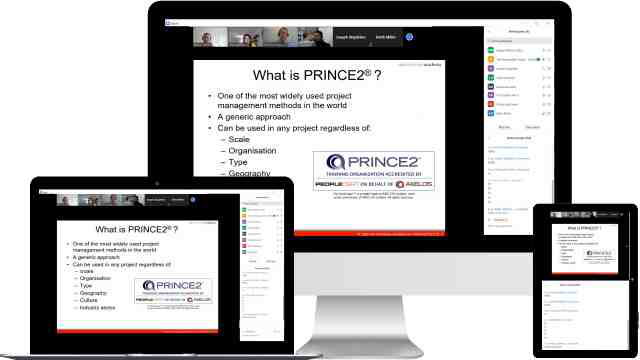
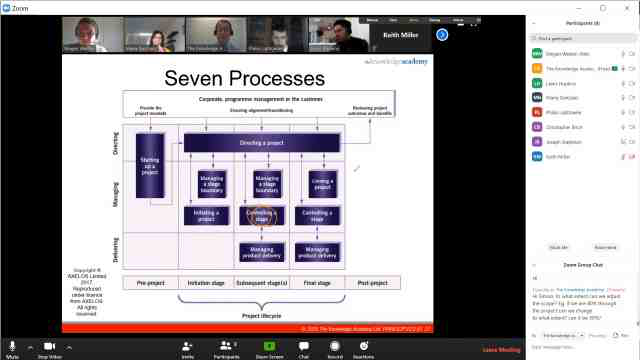
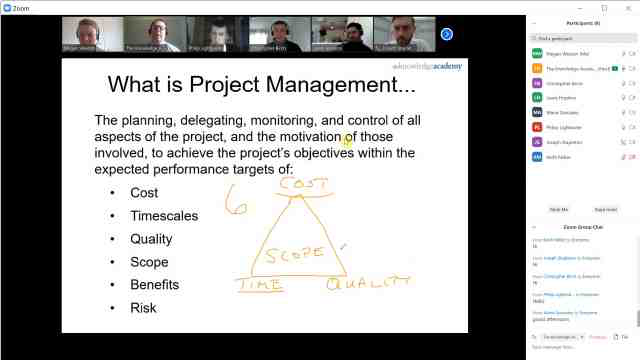
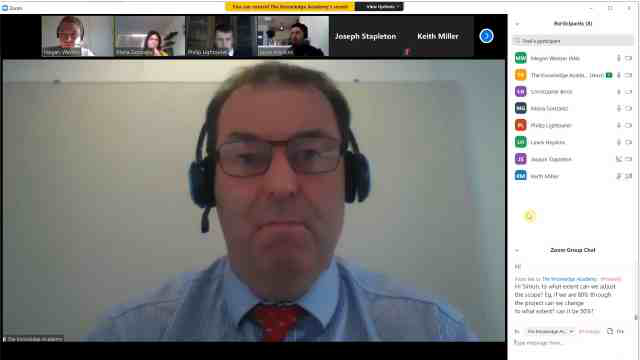
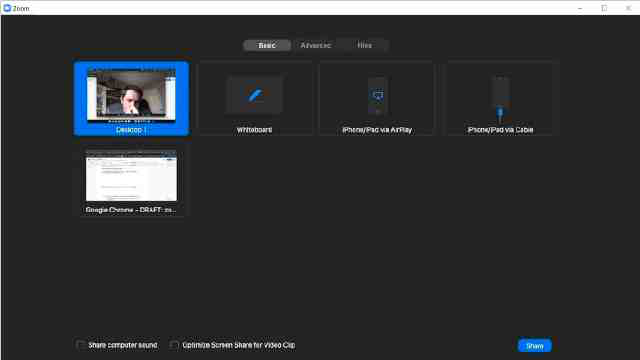
Unlock your potential with The Knowledge Academy's ISO 22301 Lead Implementer, accessible anytime, anywhere on any device. Enjoy 90 days of online course access, extendable upon request, and benefit from the support of our expert trainers. Elevate your skills at your own pace with our Online Self-paced sessions.
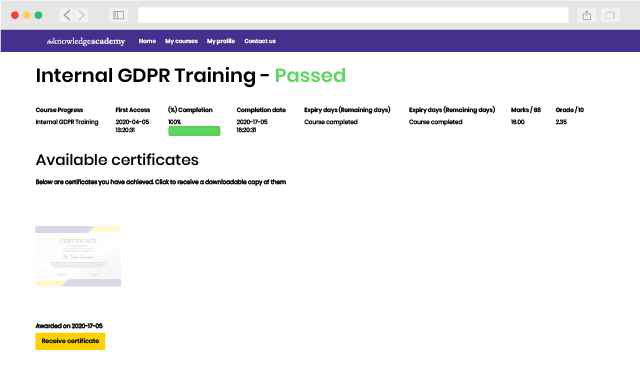
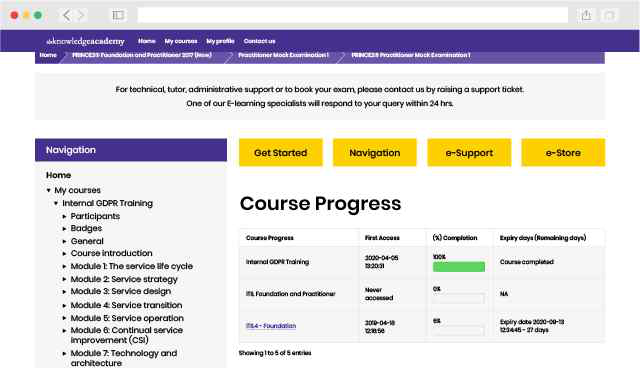
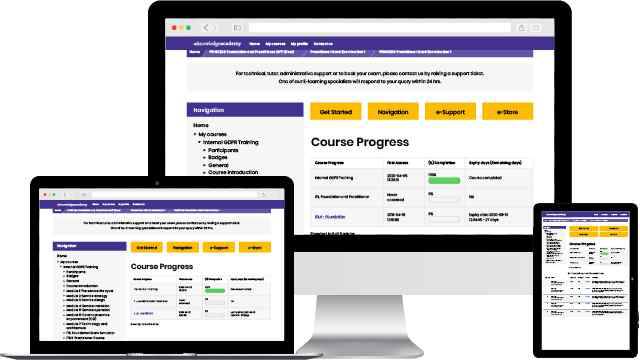
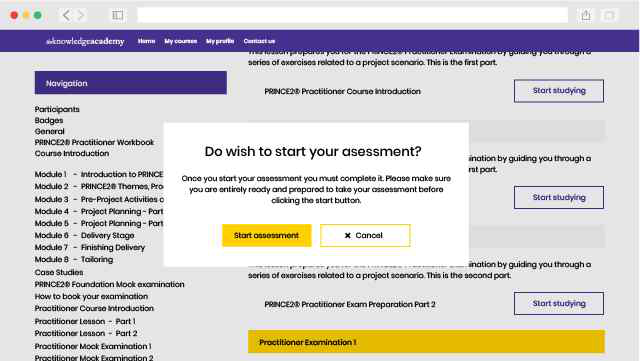
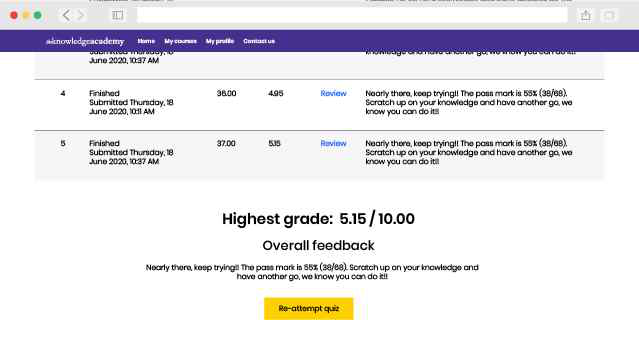
Experience the most sought-after learning style with The Knowledge Academy's ISO 22301 Lead Implementer. Available in 490+ locations across 190+ countries, our hand-picked Classroom venues offer an invaluable human touch. Immerse yourself in a comprehensive, interactive experience with our expert-led ISO 22301 Lead Implementer sessions.

Highly experienced trainers
Boost your skills with our expert trainers, boasting 10+ years of real-world experience, ensuring an engaging and informative training experience

State of the art training venues
We only use the highest standard of learning facilities to make sure your experience is as comfortable and distraction-free as possible

Small class sizes
Our Classroom courses with limited class sizes foster discussions and provide a personalised, interactive learning environment

Great value for money
Achieve certification without breaking the bank. Find a lower price elsewhere? We'll match it to guarantee you the best value
Streamline large-scale training requirements with The Knowledge Academy’s In-house/Onsite ISO 22301 Lead Implementer at your business premises. Experience expert-led classroom learning from the comfort of your workplace and engage professional development.

Tailored learning experience
Leverage benefits offered from a certification that fits your unique business or project needs

Maximise your training budget
Cut unnecessary costs and focus your entire budget on what really matters, the training.

Team building opportunity
Our ISO 22301 Lead Implementer offers a unique chance for your team to bond and engage in discussions, enriching the learning experience beyond traditional classroom settings

Monitor employees progress
The course know-how will help you track and evaluate your employees' progression and performance with relative ease
What our customers are saying
The trainer was extremely knowledgeable and the one on one classroom made it easier to learn
Kate Reilly
Stratos was a fabulous trainer with lots of passion, experience and real life recommendations.
Hannah Gael
Very accurate helpful and he used to clear every single idea. Really appreciate his knowledge
Tarek Alwafaii
ISO 22301 Lead Implementer FAQs

Why choose us

Best price in the industry
You won't find better value in the marketplace. If you do find a lower price, we will beat it.

Many delivery methods
Flexible delivery methods are available depending on your learning style.

High quality resources
Resources are included for a comprehensive learning experience.




"Really good course and well organised. Trainer was great with a sense of humour - his experience allowed a free flowing course, structured to help you gain as much information & relevant experience whilst helping prepare you for the exam"
Joshua Davies, Thames Water



 Back to course information
Back to course information
Complete Risk Management Certification
Save upto 40%Included courses:
MoR® 4 Practitioner Risk Management Certification$6995
Certified in Risk and Information Systems Control (CRISC)$4395


Total without package: $14285
Package price: $8595 (Save $5690)
Limited budget?
 If you miss out, enquire to get yourself on the waiting list for the next day!
If you miss out, enquire to get yourself on the waiting list for the next day!













 If you wish to make any changes to your course, please
If you wish to make any changes to your course, please

